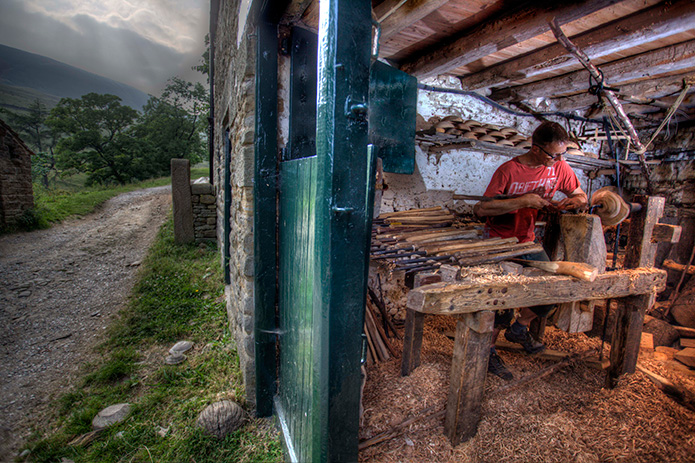
We have long-admired Robin Wood’s work from afar, a talented, award-winning bowl maker from the Peak District who still makes wooden cups, bowls and plates in the same way as they were made in Britain more than 2,000 years ago. So, we were thrilled to have had the pleasure of meeting Robin at his workshop in Edale, to understand his craft, where he draws his inspiration from, and his thoughts on wood turning and, as Chairman of The Heritage Crafts Association, the future of traditional British craft in general.
About Robin Wood
Based in the Derbyshire Peak District, Robin Wood is an internationally respected wood worker who creates one-of-a-kind bowls and platters by hand, using local timbers and traditional techniques but with a distinctive modern twist.
Whilst working in woodland conservation for the National Trust, clearing and replanting woodlands in Kent after the 1987 storm, Robin became fascinated by the craft, and inspired by British and Scandinavian techniques, set about reviving the technique of bowl making using a pole lathe, first learning the blacksmithing skills required to forge the specialised turning tools.
Robin’s design style is simple; allowing the wood to express its own qualities including burrs, spalting and other naturally-occurring imperfections, meaning each of his pieces is truly unique. Rather than merely making bowls as ornaments for the sole purpose of displaying spectacular colours and grain patterns in wood, Robin makes pieces that are down-to-earth and unpretentious, created to be cherished for generations, intended to develop a patina that can only be formed by regular use and handling.
Robin is passionate about traditional British crafts, and is currently the Chairman of the Heritage Crafts Association, a body set up to provide a focus for all people who care about the loss of traditional skills to provide a sustainable framework for the future. Robin is also a published author, having written The Wooden Bowl, the first authoritative account of the history of the wooden bowl dating back 4,000 years.
Robin also makes individually hand-crafted benches, stiles, bridges and other countryside furniture and runs spoon and bowl carving courses from his workshop in the Peak District.
Firstly, for those readers that aren’t familiar with you, can you explain a bit about yourself and what you do?
I have been a full-time professional wood carver since 1995. The main objects I make are bowls, plates and drinking vessels. I create them using a foot-powered pole lathe, a technique that was ubiquitous in Britain between the end of the Roman Empire and the rise of ceramics in the 1700s.
Throughout the Medieval period in Britain and the rest of Europe, most people had very few possessions, but almost everyone would have owned a knife, spoon and a turned wooden bowl. Medieval account books show that tens of thousands of wooden bowls were ordered for events such as coronations. Every village had its pole lathe turner, hence why the surname ‘Turner’ remains the 26th most popular surname in Britain, but the potteries were really the death knell for their craft as their main market completely dried up.
For over a thousand years our ancestors ate and drank every day from turned wooden bowls and cups, but by the early 20th Century the craft of making these bowls and drinking vessels had completely died out. Since the 1970s, interest in the craft of woodturning has increased a lot, but whilst there are quite a lot of part-time pole lathe wood turners who have a love of making and using these wood turned bowls, as far as I’m aware, I’m the only person in the world keeping this ancient method alive as a full-time profession; I sell the objects I make directly to individuals through my website. It feels like a simple, meaningful way of life.
So is there a social history element to your work as well?
Definitely. In researching the craft, I learned that the wooden bowl wasn’t just used by the poor, but by people across all social levels. They were valued so much, that if one split after many years, instead of replacing it, it was mended by drilling holes either side of the split and inserting an iron staple, for example, binding the wood together. People became very attached to their bowls, and speaking to older people today, who used wooden bowls when they were younger, they talk fondly about the bowls they ate from as a child, remembering all the distinctive features such as knots, grooves, shape and size. I find it all very fascinating.
When I first started studying them, I would have described these bowls as crude or naïve, but I realise now that they were made with remarkable skill. Instead of the lack of polished finished being because of the maker being incapable of doing the job well, it was because of the simple tools they were made with, and the type of wood being used (“green” or partly seasoned). The subtle details in the wood make the bowl feel alive and when I handle them I can feel the touch of the maker from many years ago.
How did you get started and who would you say has inspired and influenced you the most in your work?
I found turning bowls and carving spoons to be the perfect way to learn about the qualities of the different trees timbers whilst I was working in conservation for the National Trust, and at the same time produce something beautiful and useful for the kitchen. I was apprenticed to a warden who had started in forestry before the days of power tools, who sculpted items using the natural curves of trees.
I also took a lot of inspiration from George Lailey. George was the last person in England to make a living turning bowls using a pole lathe. When he died in 1958, aged 89, a craft going back more than 2000 years died with him. George and his father used to supply Harrods with their products in the early 20th Century, when there was a demand by major stores for craftsman-made products, which is sadly no longer the case now.
George Lailey, and a few others still working at the same time, were the “Last Bowlturners”, and they included the likes of James and John Davies in Aberych, Wales (a small village in Pembrokeshire famous for its bowlturners), Jack Jordan in Wellington, Somerset, the Hughes brothers (Felix, Joseph and Frank), from Glasslough, County Monaghan in Ireland and also James Loftus from Borrisokane, in County Tipperary. I researched all their equipment, and made replicas, and then taught myself the techniques when setting about learning the necessary skills to call myself a true pole lathe bowl turner. The bowls I produce, I feel, have more life about them than those made with electric lathes and sandpaper.
When I gave up forestry in 1995, I spent the next 10 years travelling across Europe, learning from traditional turners and carvers in Romania, studying medieval wooden bowls and spoons from archaeological sites in Russia, Germany, France and Belgium, and taking a lot of inspiration from Scandinavia designs. I also worked with UK archaeologists on major collections, such as the Mary Rose, and extensively researched the history of the craft, looking at documentary evidence from archaeological reports to Medieval manuscripts, and also handling many hundreds of old bowls to gain a real feel for the skill that went into making them.
However, I think George Lailey was the biggest inspiration for me and to commemorate fifty years since George died, I made a commemorative nesting set of bowls in spalted beech, all cut from one block of wood. I made a video of how I made this which is on my website.
Can you describe what a pole lathe is and how does it differ to a normal lathe?
A pole lathe is a machine for turning wood; a piece of wood is placed on the lathe, rotated and a cutting tool can be applied to it to create rounded objects. The lathe itself (there are many types) is often described as the first machine tool and its origins go back to the Bronze Age. In the past the pole lathe was very popular for making chair legs, rolling pins, spindle turning, but was also used for bowl, cup and plate making.
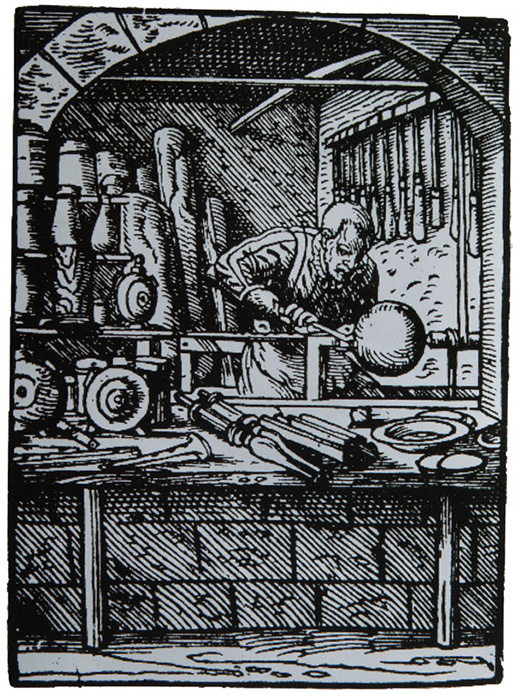
The turner in the Book of Trades 1568, with hook tools hanging behind him. Image courtesy of Robin Wood
My pole lathe is quite hefty, made of heavy timber beams and posts, but it needs to be quite substantial as I turn large lumps of wood using aggressive tools, and a lesser machine is not going to take the strain.
It’s a very simple mechanism. A springy sapling about 12 feet long is anchored at its base. At the other end, a length of string is used as a drive cord, which hangs free. It doesn’t have to be string, and other material – I use an old conveyor belt – can be used. The string is wrapped twice around a spiked chuck, known as a mandrel, and then attached to a foot treadle (like a pedal) at the base of the lathe.
When the turner pushes down on the treadle, the mandrel, together with the block of wood that has been attached to it (we call this a ‘blank’) spins around towards the turner and a cut is taken, which appears as a spiral groove. The mandrel and the blank rotate around two metal spikes called ‘centres’, which are fixed to two uprights called head and tailstocks (or ‘poppits’); one of which is adjusted to ensure the wood is held tightly in place as it rotates. Once the foot is taken off the treadle, the springy sapling returns the treadle to an upright position so the process can be repeated.
The action is reciprocating, the mandrel and wood first rotates in one direction and then back the other way, however the turner only uses a chisel to gouge out the wood on the downward push of the treadle. As the process is repeated the surface of the bowl develops a varied texture, which is grooved, but still cleanly cut, which is basically what makes a bowl turned by a pole lathe so distinctive.
In theory, the action of the pole lathe, and the skills required to operate it, are very similar to those used on a modern power lathe, although the pole lathe is very different in that it is reciprocating, whereas a modern power lathe spins continuously in one directly, and the power for a pole lathe comes from the turner directly, whereas a power lathe uses electricity. Also, with a pole lathe, we only use green or partly seasoned oak, whereas a power lathe can use fully seasoned timber, which is extremely hard. We can’t use our chisels on a power lathe, as the forces are too powerful and the blade is likely to break.
Bowls made using a pole lathe have a very distinctive character with the marks of the tools being clearly visible, like hand thrown pottery or blown glass.
Can you describe how you make your bowls and what wood-turning entails?
I make a variety of tableware pieces, such as porringers (a shallow bowl with handles ideal for soup, cereals etc), olive bowls, breakfast bowls, general eating bowls, nesting bowls, mazers and quaiches (types of drinking vessels), star bowls (decorative bowls) and dinner plates; all different styles replicating different eras, and of course, individual pieces for commissions and general one-offs. So you can see, a lot of different pieces each requiring different techniques.
Using a porringer bowl as an example, I begin with cutting a bowl blank which has been roughly cut to shape with the chainsaw, or it could be done using a carpenter’s, carving or broad axe. Incidentally, the largest diameter of wood I’ve used to make a set of nesting bowls is seventeen inches, which is a considerable size to fit on the pole lathe!
The blank is then mounted on a spiked mandrel with a sharp tap of the hammer and then centred very carefully between the metal spikes of the poppits on the lathe.
Once accurately centred, the string is wrapped twice around the mandrel, and its now ready for turning. The bowl is then ready for shaping. I shape the outside first, using a ‘hook’ tool, and then to hollow out and shape the inside, the blank is removed from the lathe, and reversed.
I use long, curved tools to shape the inside, and I’m regularly checking the thickness of the bowl to get the correct width and weight; I normally work to within an inch of the base. When I hollow out the inside, I don’t just turn it into wood shavings; instead I cut away the inner dome intact, and use it to make another smaller bowl. Often I can make a third from inside the second, and this is how I make my nesting bowls. Once the core is snapped out, the very bottom of the bowl is smoothed using a specially designed hand-forged curved knife from Sweden. I don’t use any sandpaper for this, and rely entirely on the sharpness of my tools to get a good finish. Finally, the small piece of end waste on the bowl’s base is removed with a carpenter’s or carving axe, and the handles are shaped likewise.
Once the turning process is complete, and because I use green wood, the bowls are left to dry for around 3 – 6 weeks, depending on the weather, the type of wood, and how green the wood is. They are then finished with natural vegetable oil which is applied hot, I use a deep fat fryer for this, so it penetrates and seals the wood.
Once the bowls have been used, they can be washed in hot soapy water and, if desired, occasionally re-oiled using a little sunflower or walnut oil.
How do you select your wood and where do you source it from?
My timber is sourced as locally as possible; although Edale is not particularly a wooded region, so much of it comes from a tree surgeon about 20 miles away.
I use only English hardwoods; mostly sycamore, beech and alder, although historically elm was a very popular material to use as well, and so too field maple. Many other species have been used including in bowl making including box, willow, horse chestnut, poplar, oak, ash, cherry, hornbeam and apple. Yew has occasionally used in the past to make vessels, but because of the toxins associated with yew, I only use it for making tool handles and furniture. George Lailey only used elm for his bowls. Each woodturner has their own favourites, and some woods are easier to work with than others, and each wood has its own distinctive look and feel; it’s all down to personal choice, although before 1500 AD, alder, ash and maple accounted for more than 90% of bowls made, and 1500 AD, beech and sycamore became more popular.
I don’t tend to turn totally green wood and I season most of it for between 6 to 18 months after it has been felled. When making the blanks for the pole lathe, although I am skilled in the use of an axe, I use a chainsaw to cut the approximate shape of the bowl on the selected wood after I’ve marked out the pattern of the bowl blank using a compass. Whilst not exactly a traditional tool, the chainsaw is very efficient, and in any case the marks they make are entirely turned away and make no difference to the finished piece. Traditional turners in the past used the same time to prepare a blank as it did to turn a bowl; whereas I can cut four blanks using a chainsaw in the time it takes to axe one blank.
Bowl blanks will dry out and crack if they are left out for more than a week or two. It’s far better to cut the blank and turn it soon afterwards, this way the stress is removed and the wood is free to shrink. I find it best to cut the blanks and then slow the drying by burying them in damp shavings or keeping them in a plastic sack.
What turning tools do you use for your work?
My “hook” tools are also not like the average pole lathe turner’s and there are rather a lot of them, as each design uses its own set of tools. They are very specialised, and I forge them all myself in a small blacksmith’s forge that I created just outside the workshop; it’s very unlikely that you’ll find anything similar at an ironmonger’s. I make the tools from lengths of iron bar from nearby Sheffield, once world famous for its iron and steelmaking.
How do you describe your bowls and how do they differ to, say, ceramic bowls?
I feel they are very much like part of a living tree. Eating from wood enriches your life. You also don’t get the noise of cutlery on crockery. Wooden bowls are also ideal for eating porridge and soup as heat is retained in the food but insulated from your hands. They’re also very popular for salads, olives and cereals; in fact a variety of purposes. Wooden bowls mix very well amongst stoneware, ceramics and glassware.
Who are your typical clients?
I make about a thousand pieces a year and my main clients are historical enactment societies, museums and film-makers, although there is increased demand from people who just like eating off wood.
I am often asked to make wooden replicas of ancient artefacts for re-enactors and museums from archaeological drawings or originals, which is exacting work as I have get the weight, feel of the tool-marked finish, and slightly oval shape, caused by shrinkage during drying, just right. I’ve have worked for the Globe Theatre, Jorvik Viking Centre, Hampton Court and even for Ridley Scott on his film Robin Hood. I have replicated a wooden ladle from diagrams from the Mary Rose and an Iron Age bowl from Glastonbury.
There seems to be a lot of talented craftsmen out there who make fantastic items but have little online presence and perhaps aren’t getting the recognition they deserve. How much of a difference has investing in an ecommerce store and being a regular blogger contributed to your business, and what do you recommend for others who have yet to embrace technology?
The internet is hugely important to my business, and I was quite an early advocate and set up my first website in the mid/late ‘90s, and I’m also an active blogger. I sell virtually all of my work through my website, which is great, as I don’t need to attend shows and galleries to sell my work. My concern with selling via retailers is they’re not always good at selling the story behind the work, and therefore craft isn’t an easy product to sell via shops. The thing with a website is that it’s easy to tell a story, which is very important for heritage products, where the story is of paramount importance, as people are buying the story and not just the product. A website is a brilliant vehicle for telling a story. Blogs are important but they are more ephemeral than a website and it’s important to keep adding new content and it’s basically trial and error as to what content works, and what doesn’t.
The blog is a great way to connect to other craftspeople around the world. A Japanese woodworker contacted me a few years ago after reading my blog, and through our correspondence he has built himself a pole lathe and now teaches people in Japan to make bowls. Likewise, he’s taught me a lot about Japanese woodworking, arranged for some of my work to be lacquered by Japanese lacquer-workers, and we’ve exchanged tools. Eighteen months ago, a Swedish blogger contacted me and invited me over to Sweden to work on a replica Oseberg [Viking] ship being made there, which was one of the most significant woodworking projects in Europe in the past five years, and I got to spend a week working as part of the team, which was really exciting. These sorts of cultural exchanges really couldn’t have been possible without the internet.
In my opinion, in this day and age, no business can survive without a basic website at the very least. A basic website, perhaps costing £200 or £300, says who you are, where you are, what you do, and how people can contact you. It’s as important as have your name in the Yellow Pages back in the mid-‘90s. If a potential customer puts your name in a search engine and no results come up, then you’ve lost them completely, so you’d be just giving business away otherwise. The same goes for establishing a blog; it’s possible to develop a simple WordPress blog very easily, and most teenagers these days could probably establish one for you for a few hundred pounds. Web 2.0 software is incredibly easy to edit and use once the site is set up.
A word of caution though, my advice for any craftsperson out there when using the web is to be very focussed on time spent on it and to keep reminding yourself that it’s a vehicle for selling to customers and not to get distracted doing other unprofitable things. It’s so easy to get distracted in social media doing things that won’t actually drive traffic to your website. With that in mind though, it’s a fantastic tool and a worthwhile investment.
Can you describe your work space and in what way does it influence your work?
I work in an 18th-century stable in Edale, Derbyshire, which is owned by the National Trust. I have rented it as my workshop since 1996. It’s situated at the start of the Pennine Way, not far from Kinder Scout in the Peak District, which is a stunning location. I like to work with the doors open, so there is a feeling of being inside yet outside at the same time. I have swallows nesting between the oak beams above my head; they’re not put off by my activities and we share the workshop in harmony. Even though it can get cold up here in the hills, I find that if I’m in a natural environment, I’m happy.
How did your relationship develop with the National Trust from once being employed by them as a forester, to then renting space off them for a workshop, and in your experience how supportive are they of heritage crafts?
In my experience, the fact that I used to work as a forester doesn’t really have any connection with my renting of workshop space from them now. After a period travelling, I contacted my local National Trust body on my return, and enquired as to whether they had spare workshop space, but it wasn’t through connections that I had or anything like that. People tend to think of the National Trust as a national organisation, but they’re actually organised as a grouping of local properties. So there isn’t really a national policy connected with crafts generally, such as pole lathe turning, although the exception to that is their support with traditional crafts connected to their buildings, such as lime mortar, stone masonry etc. After successfully securing lottery funding, the National Trust was able to help establish the ‘Traditional Building Skills Bursary Scheme’ which supports apprentices to gain experience and attain vocation qualifications, developing their building skills working on older properties.
Can you provide any advice for anyone wanting to take up a craft similar to yours, or traditional crafts in general?
I do provide a lot of advice on my blog, such as how to get started, getting an apprenticeship, how to price for work etc, so that would be a good place to look for advice.
At present there are very few crafts with a recognised easy entrance route, although that is not the case for artists and farriers, where there are lots of opportunities, but for the rest of the crafts, it isn’t always that easy to get started. I’m sure the vast majority of people working in crafts today would view themselves as self-taught. They’ve probably seen someone else doing it, which gave them the inspiration to give it a go. From there, they’ve probably done a one-week taster course from an expert, which are commonplace, to give them some further insights and inspiration. Once inspired, they tend to go away and read all the books on the subject, digest everything relevant from the internet, and in their spare time in the evenings and on the weekends, they practice relentlessly. If young or financial secure, they tend to go and volunteer with someone else to gain more experience. For those older, or less financial secure, they tend to take the plunge after a few years. That’s when the learning really starts! They say that in crafts, it takes 10,000 hours to reach proficiency level, which is about 3 years full time, or many, many years doing it part-time in the evenings. Once you’re up-and-running and established, it becomes incredibly fulfilling being able to follow your passion.
Other pieces of advice would be to immerse yourself in the craft, and learn new skills, and new ways of doing things. Consider making things that were once made in the past but aren’t today. Don’t copy – don’t become another Windsor chair maker or weaver – be innovative, and this will help with your marketing activities. Also, apart from the obvious point about needing to put the necessary hours in to achieve monetary reward, you need to focus on being the best, and consistently producing high quality work, and exploring ways of making it even better.
One final piece of advice, often overlooked, is the need to view yourself as an entrepreneurial businessman, and preparing yourself as if you were going on Dragon’s Den on TV. Do everything that a businessman would do, as you’ll go broke if you don’t. As long as you embrace the reality that whilst you are a craftsman, you’ve still got to treat it seriously as a business, then you’ll enjoy it all the more.
There is clearly a place for mass-produced items in society, such as mobile phones and computers, but why do you believe hand-crafted items are so special and what value should we place on them?
I don’t draw a line between ‘mass-produced’ or ‘small-scale craft’ – I focus on whether the products are ‘produced with skill’. David Pye, in his wonderful book ‘The Nature and Art of Workmanship’ explores this very point. For instance, take Gränsfors Bruks axes. They are produced in a forge; however they are partially made from the use of a power hammer. In one sense they are mass-produced, but they are also mass-produced with skill. In an idyllic ‘olde world’ picture, the axes would be made entirely with a hammer and anvil, but that would be slow and extraordinarily expensive. With the use of intermediate technology, say that used by the Victorians, technology such as power hammers were introduced to speed up production. This removed some of the time spending hand forging, but not altogether and the skills were still required, and furthermore the machines also required an incredible amount of skill to be used properly. Then there’s modern die forging under a hot press; the speed of production goes up considerably, but the people that do this aren’t really that skilled, and that’s not what I’m interested in.
I’m interested in the ‘meaning of work’ or to put it another way, ‘life enhancing’ work; work that is appreciated by people and made by people that take pride in their work. Work that is enjoyable and meaningful. Once you remove skill from the work, then there is no pride, or meaning, just drudgery. As consumers we can choose how we wish the people who make the products we buy live.
As an example, I run an event called Spoonfest, which is where a lot of people gather in a field with the common interest in carving wooden spoons. I needed to buy Spoonfest printed T-shirts. I could have bought them from Bangladesh for £2.50 each, or I could choose to buy them from an ethical producer for £4.50; I chose the latter. The more expensive products can be traced to manufacturers where they have an ethical policy in the workplace, where decent rates of pay are paid to workers, kids can afford to be educated, and there are Health & Safety standards. Ethical consumerism doesn’t cost a lot, but it makes a huge difference to the producers, and it enables people to lead decent lives. It can also be fun and interesting, as you can learn how things that you are buy are made.
You’ve resurrected lost skills, produced some great functional items, written a book, and become the Chairman of the Heritage Crafts Association. What goals do you still have left to achieve?
I want to continue to make great functional objects enriching people’s lives. There’s still more work to do with the Heritage Crafts Association. It’s been going since 1999, and we’re getting more recognition, but we’re not recognised on an equal footing with the innovative artistic send of the craft spectrum by the Art Council or Craft Council. Authors and artists get to represent Britain abroad supported by the Craft Council, even though they represent only 25% of crafts, but the remaining 75% of crafts, the heritage crafts making functional items, don’t receive any support at all. At the moment, the Government is only really interested in supporting contemporary crafts, those craftspeople searching for completely new ways of doing things.
As heritage crafts go back hundreds of years or more, they’re deemed by the Government to be ‘old hat’ and therefore not worthy of support. They’d be quite happy for the craft items and old tools to be consigned to centre stage in a heritage museum, but living, breathing craftspeople that could continue these crafts with a degree of support, are not helped in any way. We’re not talking direct financial aid for established craftspeople, what we’re talking about is support for schemes to bring new entrants into the crafts, support with promotions, exhibitions and galleries, etc, that artists, for example, currently enjoy. We’re making progress, but more work still needs to be done, and this is my major personal objective to see this issue rectified.
Once I’ve finished my time with the Heritage Crafts Association, I would like to get back to the workshop, making bowls, but probably concentrating on a small range, making them better and better. I have a spoon carving book in the pipeline, which is at draft stage, and has been for several years. Apart from that, I’d like to get some of my free-time back which I have shelved in recent years having dedicated all my free time to the HCA.
Thanks to Robin Wood for taking time out of his busy schedule to meet up and answer our questions. To learn more about pole lathe turning, Robin Wood runs bowl carving, and other courses, such as spoon carving and green furniture-making, periodically through the year. For more information on courses or if you’re considering some of his beautiful, functional items, please visit Robin’s website by clicking the link below:
FURTHER READING:
The Wooden Bowl, by Robin Wood
The Association of Pole Lathe Turners & Greenwood Workers (www.bodgers.org.uk)

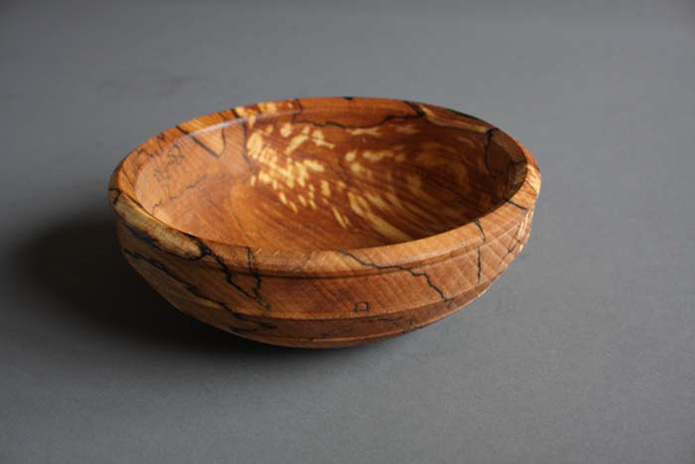
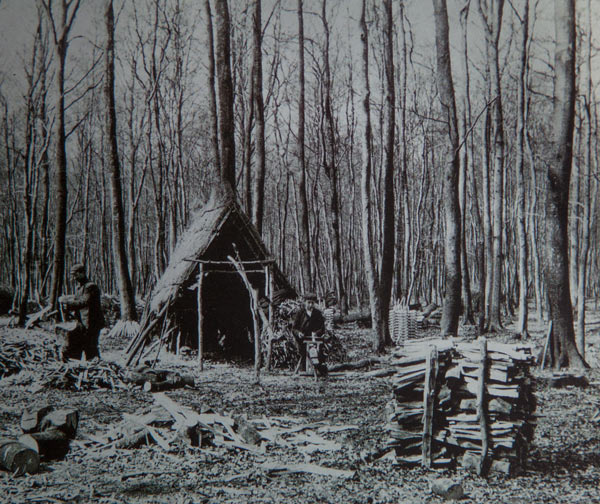
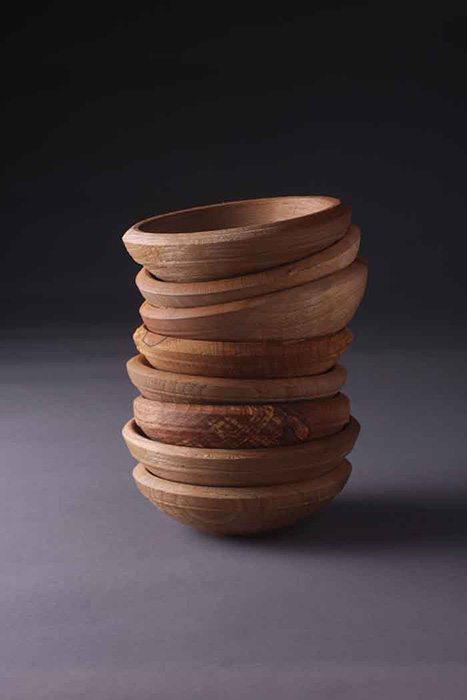
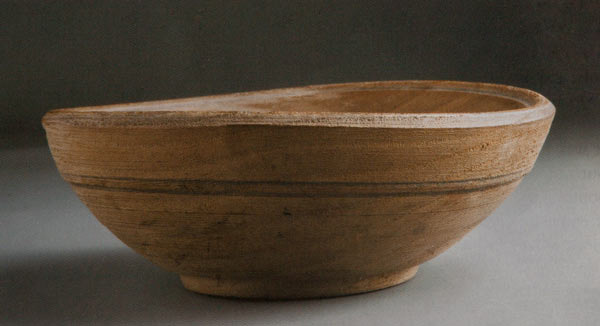
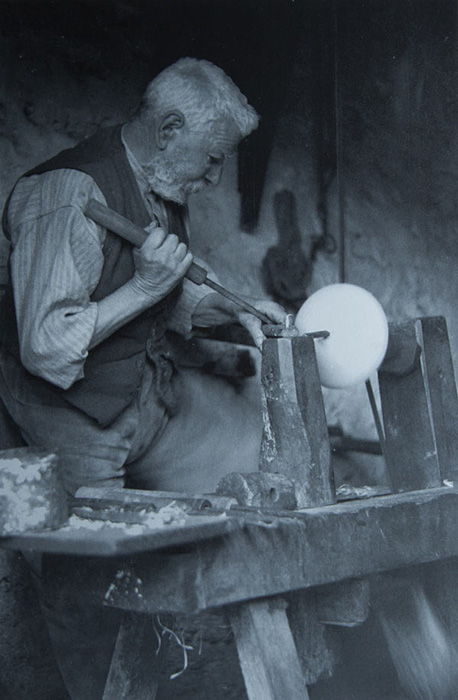
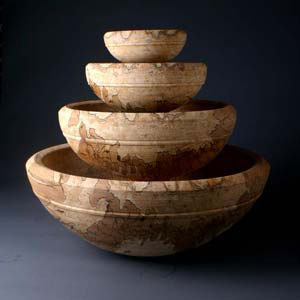
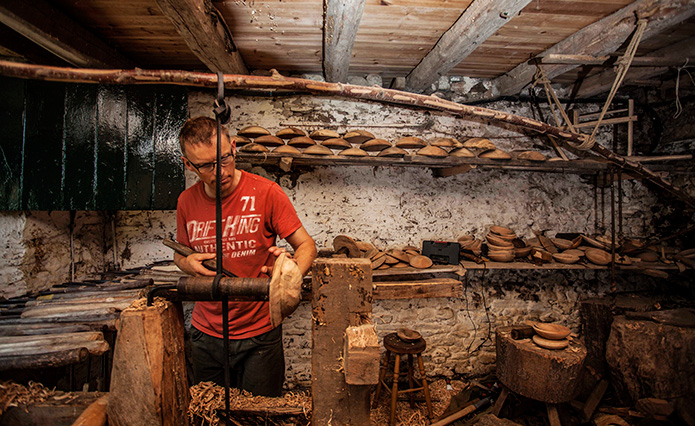
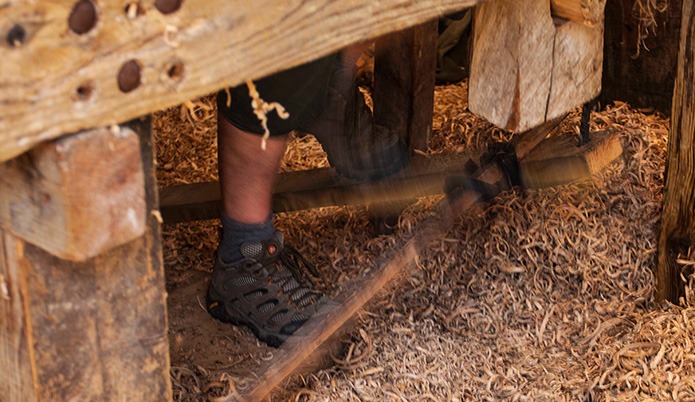
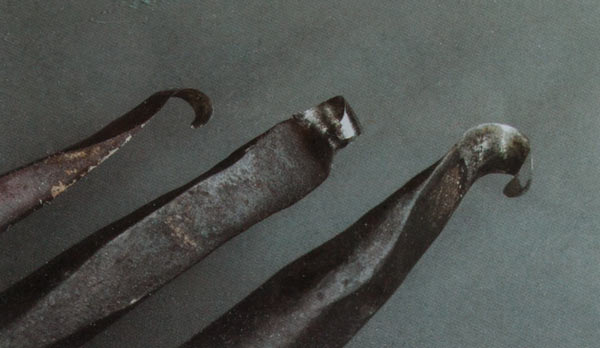
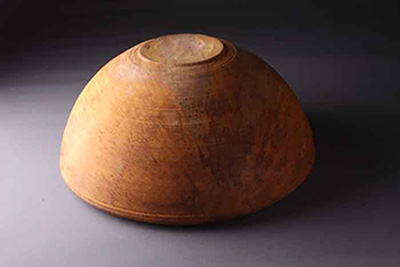
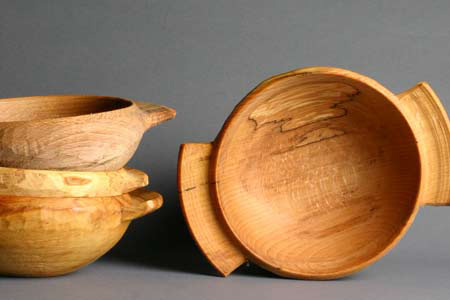
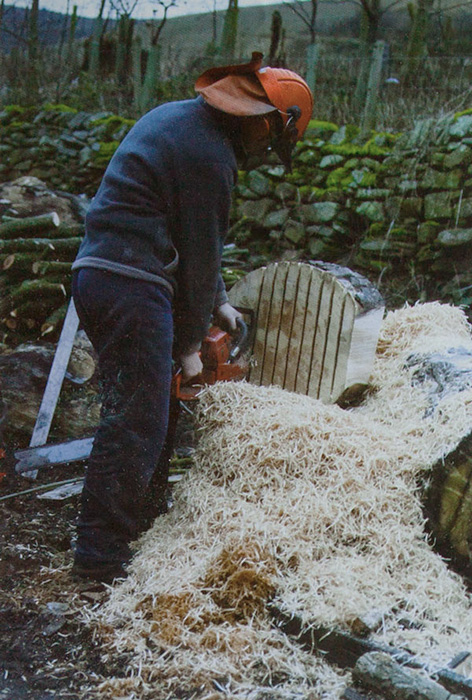
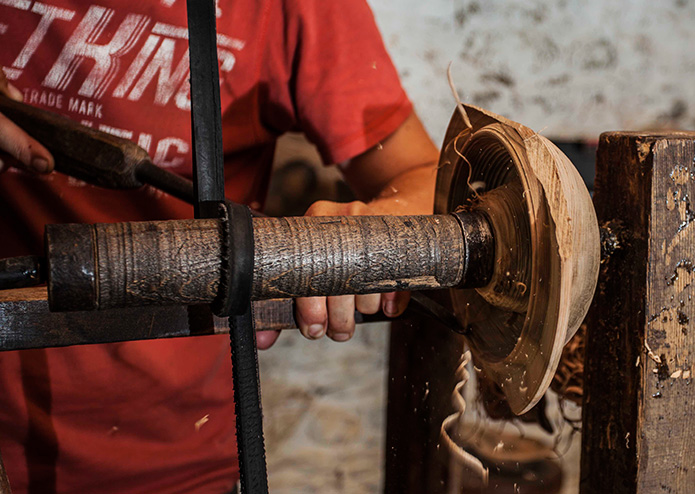
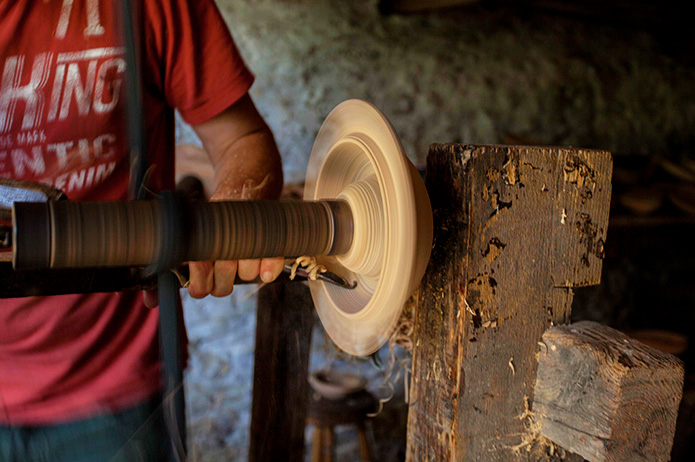
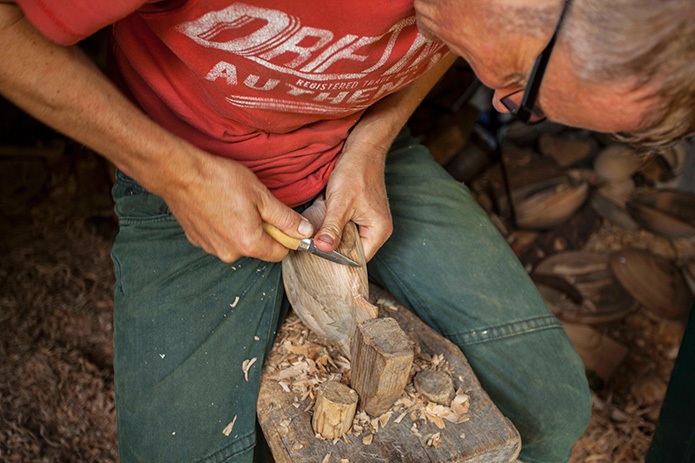
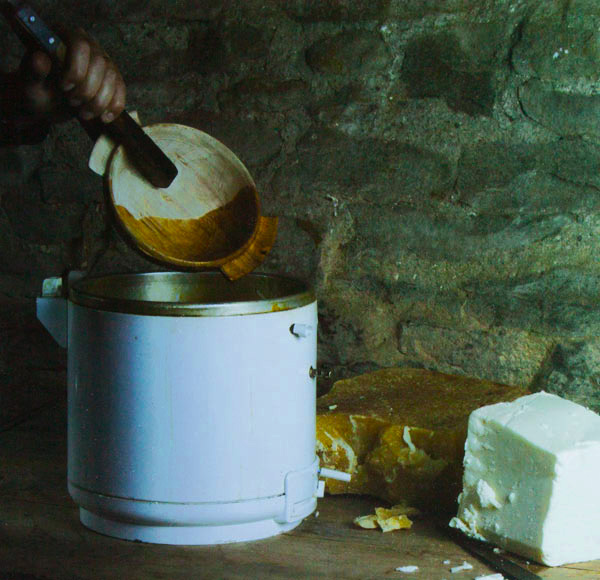
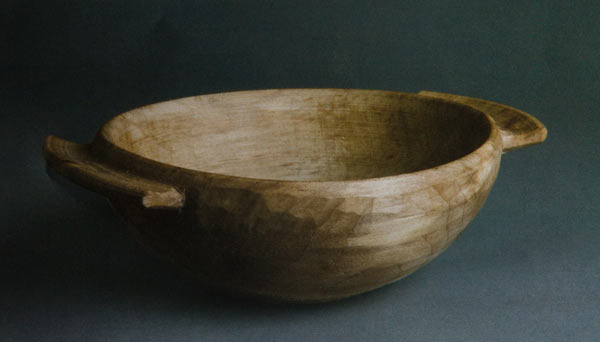
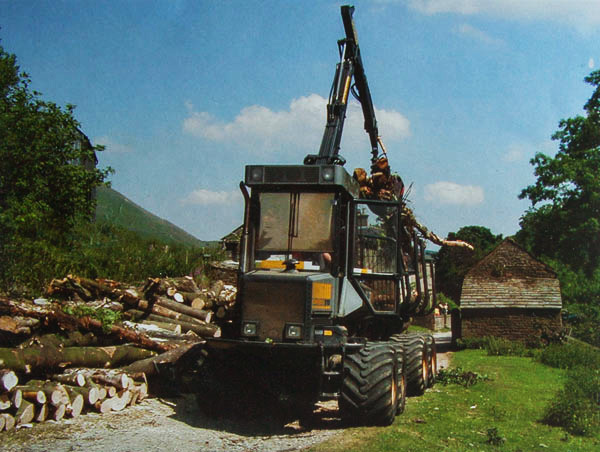
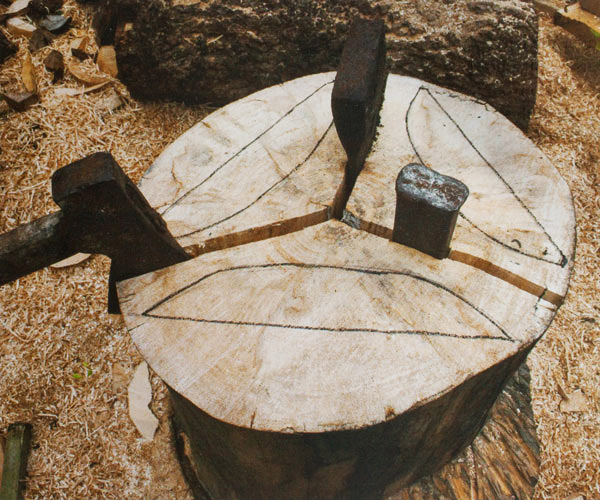
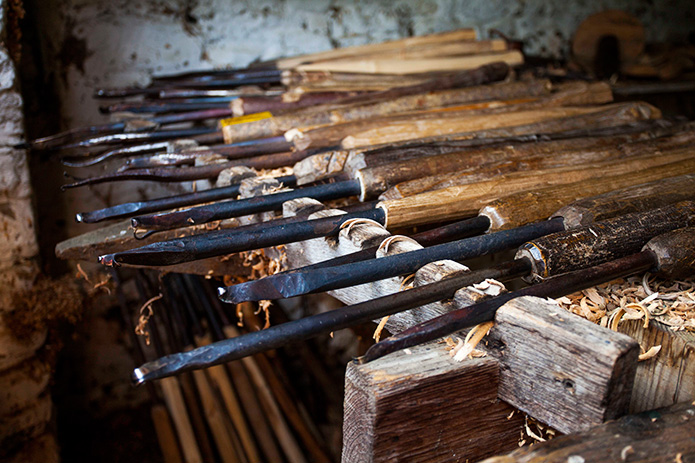
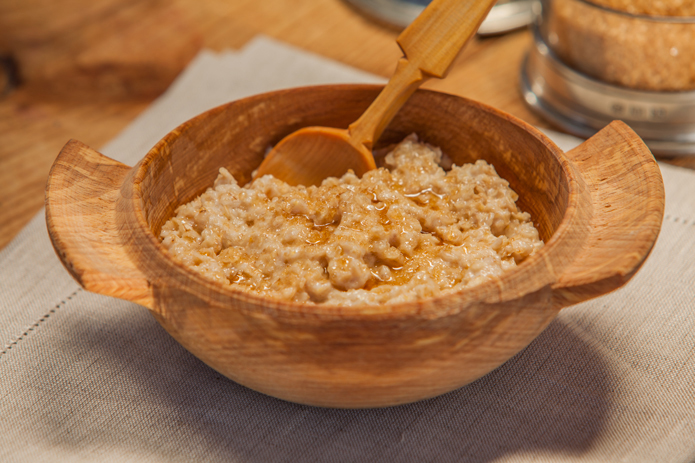
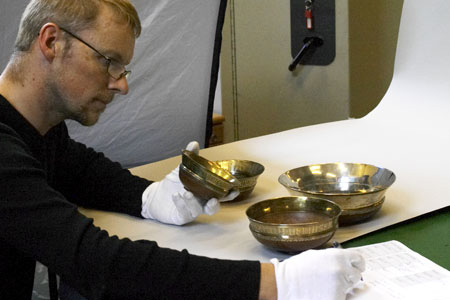
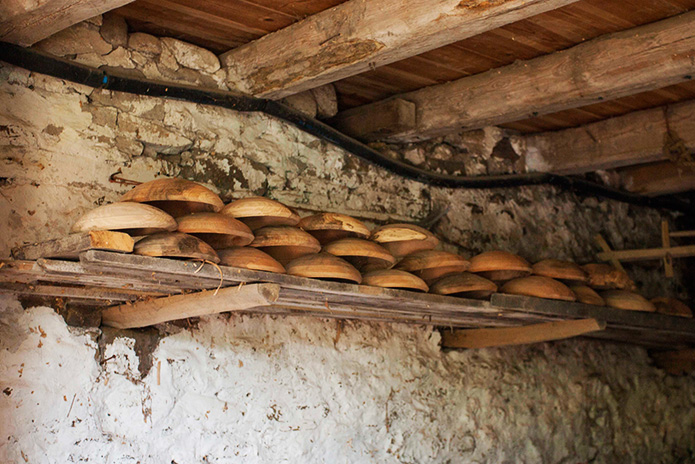
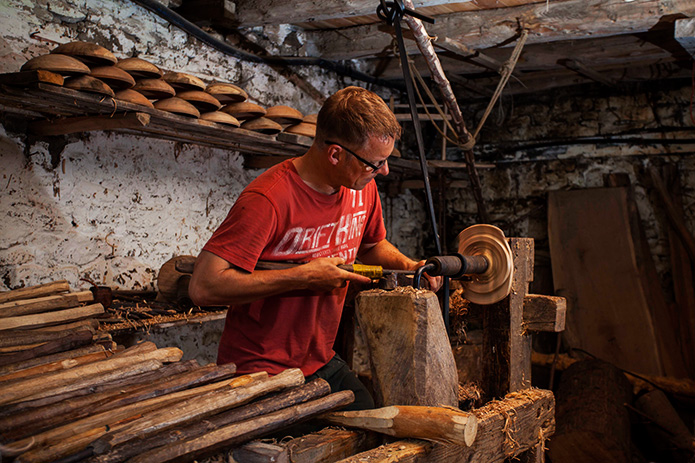
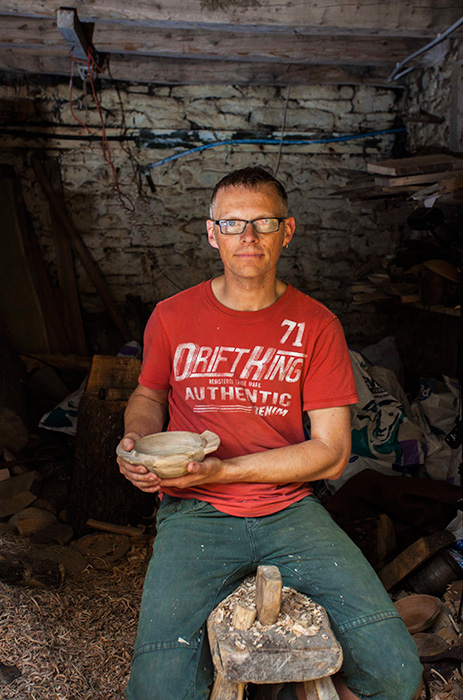
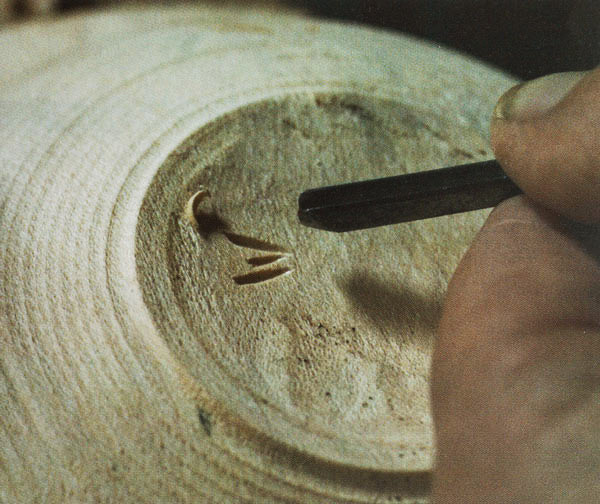
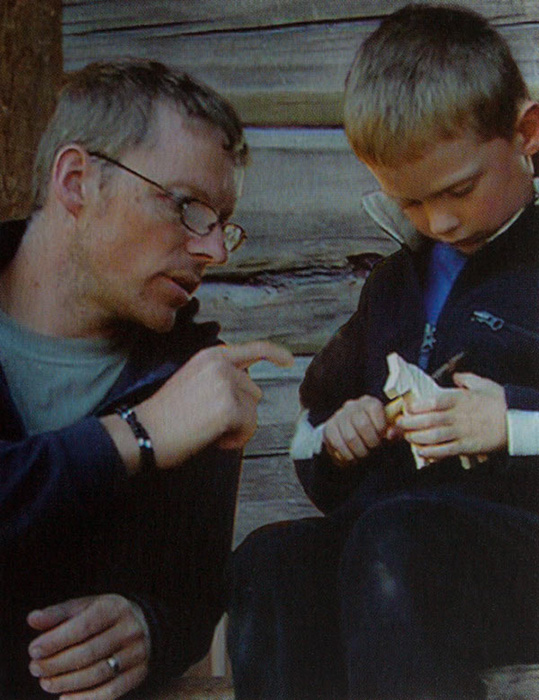
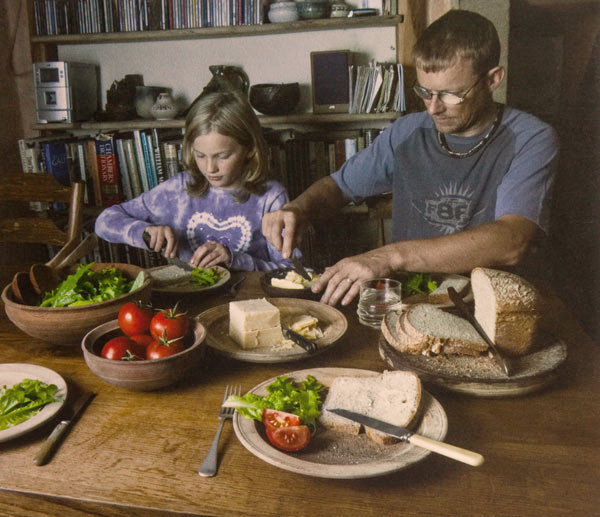
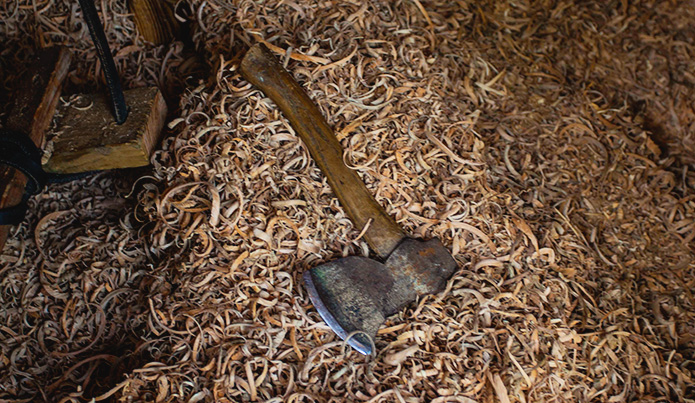
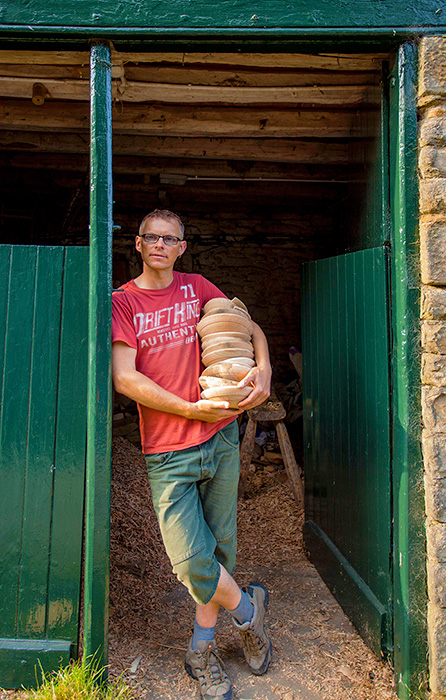









Wednesday, January 29th 2020 at 9:51 am
[…] Download Plan More @ http://www.merchantandmakers.com […]
Tuesday, September 24th 2019 at 6:57 pm
[…] Download Plan More @ http://www.merchantandmakers.com […]
Tuesday, September 24th 2019 at 11:54 am
[…] Download Plan More @ http://www.merchantandmakers.com […]
Monday, September 16th 2019 at 10:45 am
[…] Download Plan More @ http://www.merchantandmakers.com […]